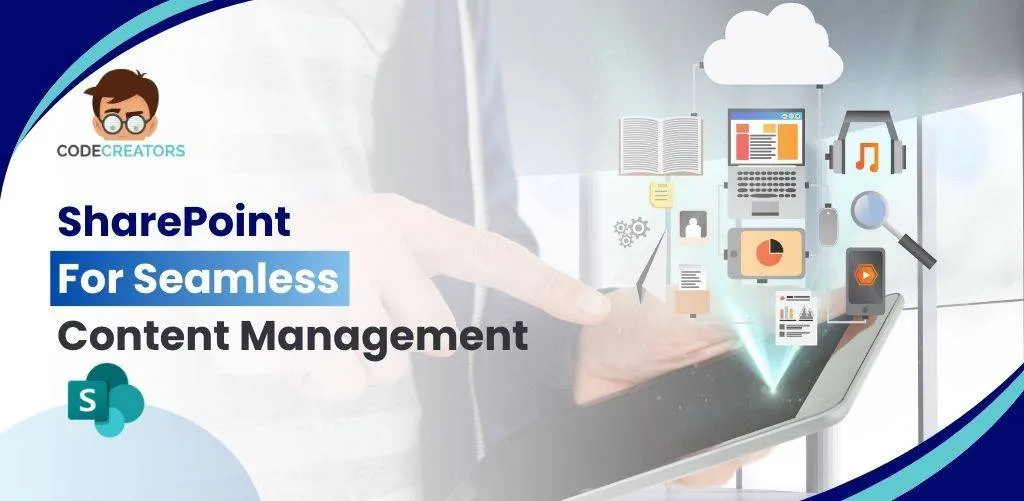SharePoint 2019 Features for SharePoint workflows

SharePoint 2019 was born directly in the cloud. The basis for the new on-premises version was a withdrawal of SharePoint Online, which took place last year. Of course, this was adapted to the realities of the on-premise world, but includes many features that are already included in SharePoint Online. Furthermore, the system has been put through its paces since deduction, as each customer environment has other challenges. The release also brings customers closer to the cloud world with SharePoint in their own data centers. Some of the highlights of the SharePoint 2019 release are presented in this post. If you already use SharePoint Online, you will find many things familiar.
What New Features Are Offered in SharePoint 2019?
1. Modern Team &Communication Pages
Probably the most important innovation is the introduction of modern team and communication pages in SharePoint Server. These pages bring a fresh look and a much slimmed surface. It is completely responsive and can be used directly on mobile devices. Furthermore, the ribbon has disappeared from the surface. Many SharePoint users will appreciate this because the technology was never really clear to end users and lacked acceptance. It also means that many features are not available on modern sites. We recommend you to not use the modern pages without prior examination of your requirements. Some things are missing, some things have been added, many things can be solved differently. It requires good planning – as so often.
2. SharePoint Home – The New Homepage
Also from SharePoint Online is the new entry page in SharePoint. Here, a start center is put together individually for each user. Furthermore, here is the news from modern team pages in which the user is a member or who he follows. SharePoint Home also brings a new search center without any additional configuration. Among other things, search terms are already suggested before the user starts to write. Interesting for the SharePoint Server users is that from here also new site collections can be created – even in different web applications.
3. Support of The Modern OneDrive Client
Until version 2016, the old OneDrive client (insiders known as “groove.exe”) was the tool of choice for synchronizing libraries and personal OneDrive if the content was on a local server. In Office 365, this has long since been replaced by the ‘Next Generation Sync Client’. This is also integrated in Windows 10. This client provides much faster and more stable synchronization as well as files-on-demand. SharePoint 2019 now supports syncing with this new client. If your company uses Office 365 services in addition to the server versions, IT may remove the old client after the migration to 2019. A big plus for the IT and especially for the end users.
4. Integration of PowerApps & Flow
Of course, this too is a result of the cloud deduction. SharePoint Server 2019 now supports connectivity to Microsoft PowerApps and Microsoft Flow. PowerApps are seen as the successors to SharePoint Form customizations with InfoPath (which, by the way, are still included). Microsoft Flow, on the other hand, is available as a powerful workflow and automation platform. But one thing I would like to tell you is that both PowerApps and Flow are not running within your data center boundaries. Both are deployed in Microsoft data centers. Thus, they are not suitable for use scenarios in which data must never leave the local boundaries of the company. The data is encrypted for PowerApps and Flow through a locally-installed on-premises data gateway to the respective Azure services.
5. Fast Website Creation
No one wants to wait for software that runs in the cloud. And for software in the company ultimately the same applies. In SharePoint Online, however, website creation was many times faster than in on-premises environments. But these are now following. Fast Website Creation functionality can now create both team pages and communication pages, as well as personal OneDrive pages, in seconds. A welcome innovation for environments with many users or processes involving the regular creation of pages.
6. PDF Viewer
Actually a little something, but something we have been waiting for many years. PDF files can now be displayed directly in the browser. It is no longer necessary to have a PDF viewer on the corresponding computer. View the trash of others – Recover documents that other users have deleted. For instance, your colleague deleted a document that you still need, then you must think of restoring it first. Previously, website administrators got these and similar requests from colleagues. From now on, users who also had write permission on the deleted document can also find the document in their own recycle bin and restore it from there.
7. New Emails When Sharing Content
SharePoint’s standard content sharing emails were never really popular, and more than one customer approached us to change them. For SharePoint Server 2019, these emails have now been customized, making it much more user-friendly.
Should You Wait or Migrate?
SharePoint Server 2019 was released in October 2018 and already makes a stable impression in the preview version. If you are planning to migrate, check if any functionality is being used that is no longer supported by SharePoint Server 2019. The migration path remains well-known i.e. always migrate to the SharePoint version after another. You should also check the basic requirements within your company. To date, it is known that SharePoint Server 2019 can only be installed on Windows Server 2016 and upwards. Furthermore, SQL Server 2016 is required. On the client-side, the minimum supported Office version is Office 2010, and the minimum browser is Internet Explorer 10. To avid, all the migration efforts, take the expert help of SharePoint maven – The Code Creators.


